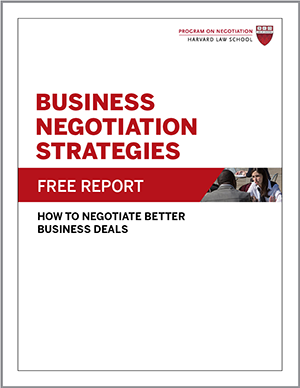
One significant negotiation to observe happened in August 2012. A California jury ruled that Samsung would have to pay Apple more than $1 billion in damages for patent violations of Apple products, particularly its iPhone. The judge eventually reduced the payout to $600 million. In November 2013, another jury ruled that Samsung would have to pay Apple $290 million of the amount overruled by the judge in the 2012 case.
Conflict Between Apple and Samsung: The Argument
In negotiation, Apple argued that it had lost significant profits in the smartphone market to its most significant competitor, Samsung, due to blatantly copied features. But Samsung contended that consumers had purchased its phones for other reasons, such as Samsung’s bigger screens and cheaper price, according to the New York Times.
Negotiations to Resolve Business Disputes
Given that Samsung is one of Apple’s biggest suppliers, the companies have a strong incentive to move beyond their dispute and build on their ongoing partnership. Yet court-ordered mediation between the CEOs of the two companies in 2012 ended in an impasse. And the disputants continue to fight in courts worldwide, with the advantage going to Apple in the United States.
Sunk Costs in Negotiations
When negotiators feel they have spent significant time and energy in a case, they may feel they have invested too much to quit. Moreover, the longer they spend fighting each other, the more contentious and uncooperative they are likely to become. All the more reason, then, to work hard at negotiation and mediation in an attempt to stay out of court.
What are your thoughts on the negotiations between large corporations like Apple and Samsung?
Related Business Negotiations Article: Coming Up with Win-Win Solutions at the Bargaining Table – Does a value-creating, win-win negotiation style have a place in modern business? In integrative negotiations strategies, a negotiator seeks to maximize his or her value claim while also creating more value for herself and her opponent. It is a cooperative style that lends itself to forging long-term agreements based on trust and mutual goodwill. How to integrate these strategies into your approach to the negotiation table is a different task entirely – how does a negotiator effectively secure her interests, expand the pie, and forge a relationship with her counterpart? This article drawn from negotiation research explores ways to build relationships with your counterpart in business negotiations.
Originally published in 2012.





By expanding the pie to understand total market share involved the two dominant market players may come to realize that they share a common interest in preventing other players from taking away a significant slice of the market and the longer the dispute continues the larger a slice will be lost to other players. Dragging Negotiations out too long may result in a settlement after the market has peaked on a bell curve of innovative value of the technology in dispute.